Why Model Trams?
Fancy a model railway? Haven’t got the room? Want to display lots of road vehicles as well? Of course others may choose to model the trams they know or remember, which is why tramway modelling is so popular abroad and why Blackpool is so popular here.
Then a model tramway is your friend! A tramway will fit into most smaller spaces and still allow a decent sized set up, including much tighter radii curves and the ability to run end-to-end. The difference to a railway is the ability to integrate into the town scene more directly but also have the scope to model railway type interurban scenes. Your trams can weave their way through the other vehicles and daily lives of the little people on your layout allowing a multitude of interesting cameos to exist.
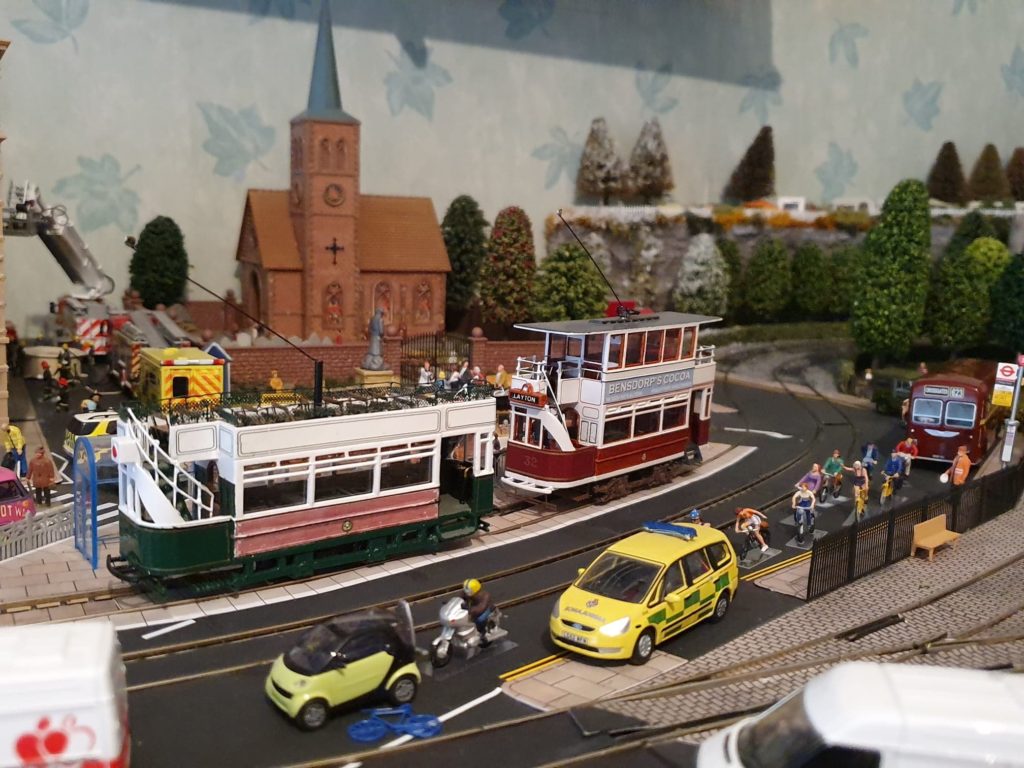
The vast range of buildings, figures, vehicles etc makes the creation of a realistic tramway scene very easy and limited only by your creativity. Your only problem will be knowing where to stop…
Getting Started
Tramway modelling is nothing scary and requires nothing special. You need nothing more than the basics of the traditional ‘train set’ of tram, track and controller. You can then build up whatever you want your layout to be from there. There are many diecast British trams which can be motorised to provide a quick and easy start. If you’d rather model something more international, then there are many ready to run models of Continental European, Japanese and USA prototypes out there also.
Selecting A Scale
Selecting your scale depends on a number of factors, but typically boils down to how much detail do you want? and what do you have room for?
N Scale
N scale is popular if you are very limited for space, which is why its so popular in Japan. This is a small scale (2mm to 1ft) that works out at 148 times smaller than real life for British N. Continental N is slightly smaller still at 160 times smaller than the real thing for Continental Europe or American scenes. Using new techniques and technologies such as computer design and 3D printing, the detail achieved with modern N scale products is now the equal of what can be found in the larger scales. As a popular train modelling scale, there are a wide variety and range of items that can be used.
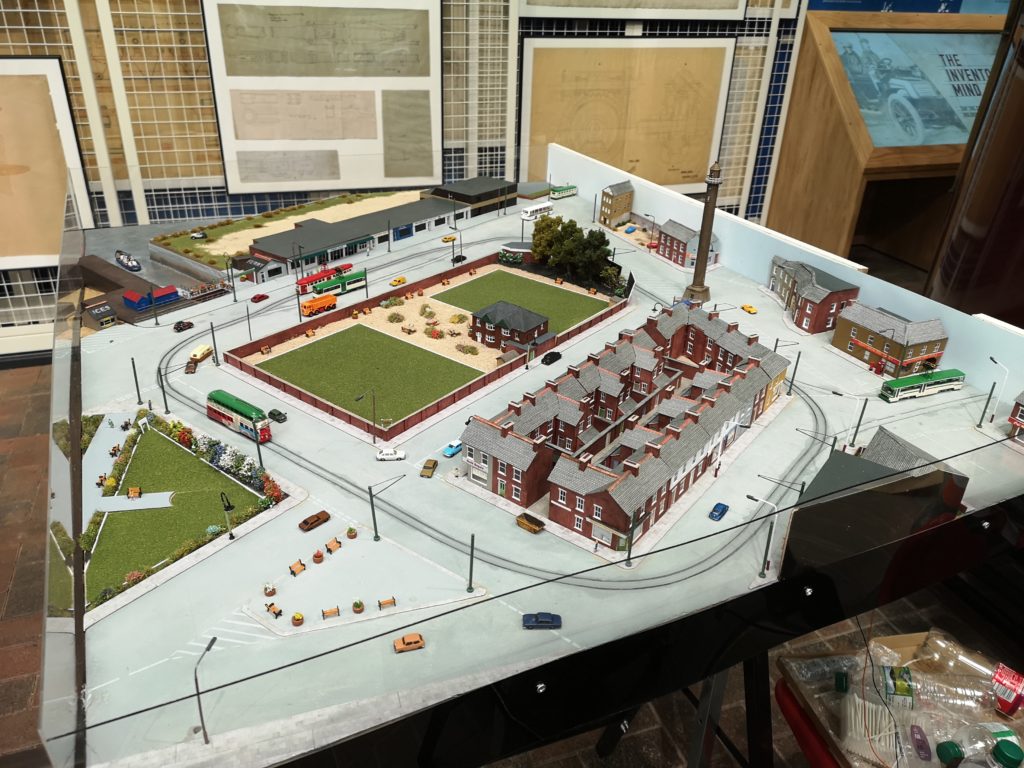
o scale
O scale is perfect for those with plenty of room and who like to spend time creating a work of art. At a scale of 1:43 (7mm to 1ft), this scale is at the boundary between tramway modelling and model engineering, with super-realistic trams that fully mimic the real thing entirely possible in O.
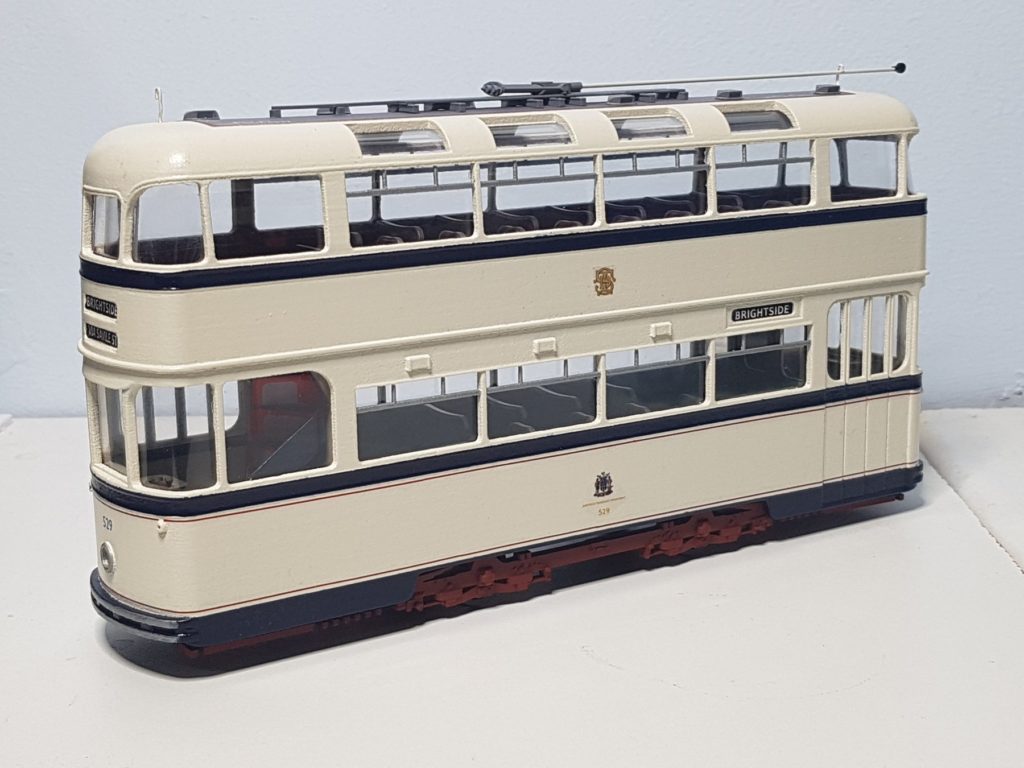
OO scale
By far the most popular British scale (as with railways) is OO. At 4mm to 1ft (1:76), this balances size and detail meaning it’s most popular for those who haven’t quite the room or wallet for O but whose eyesight doesn’t quite lend itself to N. There are a vast wealth of items available from a great many manufacturers for this popular scale which means the possibilities of location and time period for your tram models are endless. This is the scale that has the widest selection of tram models to choose from.
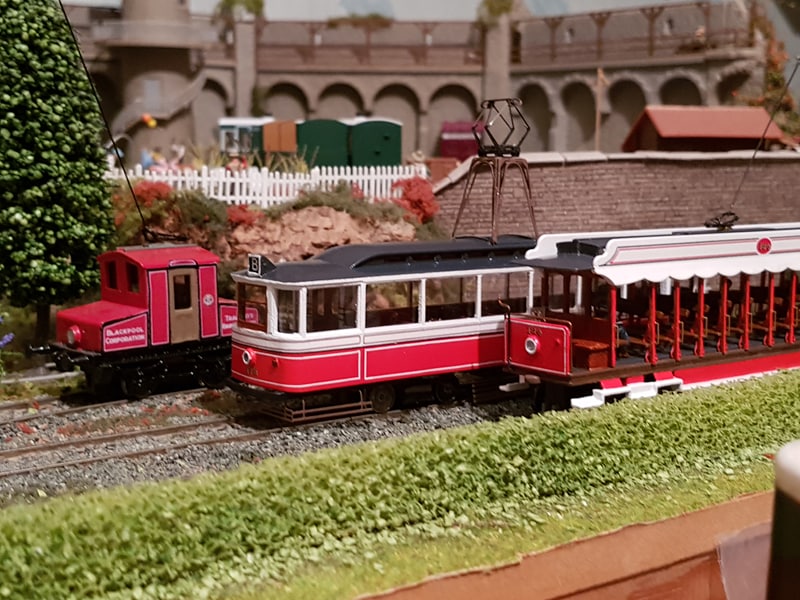
HO scale
This is the Continental European and American scale that is their equivalent to the British OO. Slightly smaller than OO at 3.5mm to the foot (1:87), HO is the most popular scale for those who wish to model Continental or American systems. The same track as OO is used, but the trams and scenery are smaller. Like OO, the popularity of HO means that there is a significant array of suppliers and models that allows the modeller to produce any number of locations across America or the continent to any time period they choose.
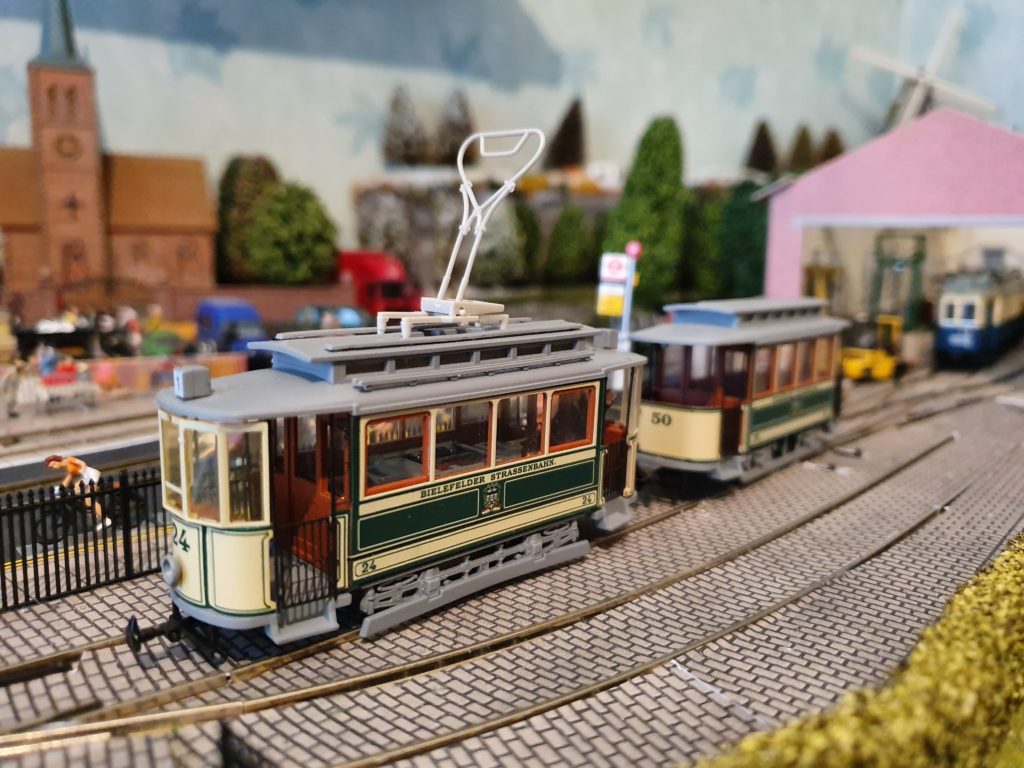
other scales – Z, TT, G & ¾”
Whilst N, O, OO and HO are the most common scales, there are a number of niche scales that offer both bigger and smaller options for tram modelling. Smaller than N, the 1:220 Z scale is a relatively new scale in the model train world originating from Japan and Germany. There are very few tram models available at this moment in Z, but interest and supply of items is beginning to increase as the scale becomes more established. We know of several modellers who are pushing the boundaries in starting new layouts in Z and look forward to seeing their efforts come to fruition.
Halfway between N and OO scales is TT which is 3mm to the foot (1:101). Whilst a niche scale that is not as popular as the more common offerings, TT nonetheless has a dedicated modelling community taking advantage of the balance between size and detail. A number of tram modellers model in TT scale and there are a number of layouts on the UK exhibition circuit, such as Alan Brown’s ‘Upson Down’ which is a compact layout showing a fictional tram museum.
On the larger side of O scale are G (1:22.5) and ¾” (1:16) scales which are firmly in the realm of model engineering. Modelling at these scales see trams built from scratch using a variety of methods and materials that often replicates how the real thing was built but in miniature. The finished product is often staggering and a real credit to the craftsmanship of the maker. Capable of operating both indoors and as a garden tramway, trams in these large scales can be seen at exhibitions and in many museums up and down the country.